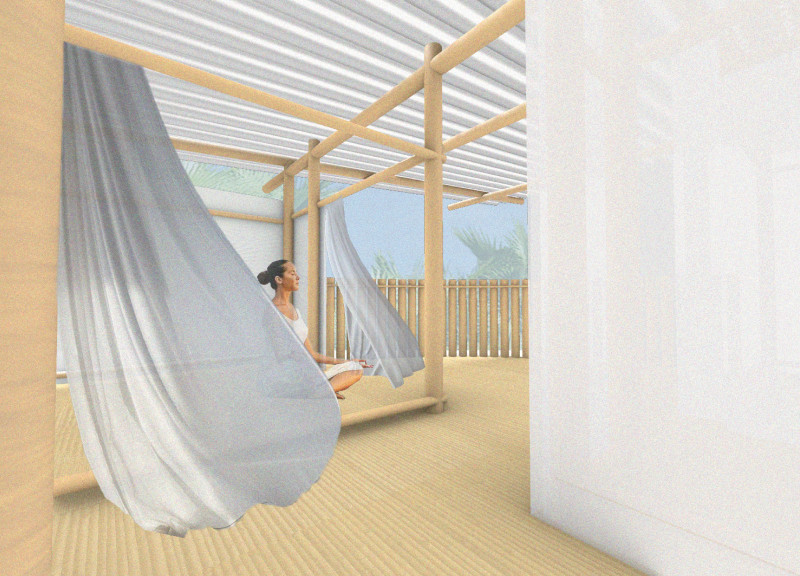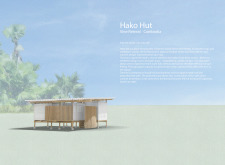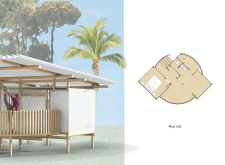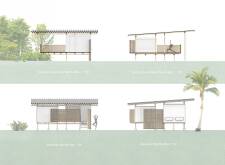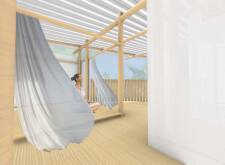5 key facts about this project
Hako Hut is situated in the tranquil landscape of the Vine Retreat in Cambodia. The design focuses on creating a peaceful environment that encourages self-reflection and a connection to nature. Its circular shape enhances the flow between different areas like the bedroom, meditation/yoga room, and bath space, all of which are arranged thoughtfully around an outdoor corridor.
Design Layout
The circular arrangement of Hako Hut allows for easy movement between various functional areas. Each room is designed to offer privacy and focus, essential for activities such as meditation and yoga. The outdoor corridor connects the spaces, making transitions smooth and effortless. This organization fosters a calm atmosphere, which is vital for personal reflection and engagement with the surrounding landscape.
Integration with Nature
Hako Hut features a strong connection to the natural environment. The meditation/yoga room opens up to an outdoor terrace, providing views and direct access to the peaceful surroundings. This relationship with nature encourages those inside to engage with the landscape, enhancing the experience of the retreat. Such design decisions aim to deepen wellness and awareness for users.
Material Choice
Materials used in Hako Hut highlight a commitment to sustainability and local resources. The primary structure is made from bamboo, a material that blends well with its surroundings while also being strong. A corrugated metal roof provides needed durability and protection against the elements. Polycarbonate walls allow light to enter, creating a warm ambiance, especially at night. This selection of materials balances both function and visual interest.
The design emphasizes details, such as the patterns of light and shadow created by the polycarbonate walls. This interplay enhances the space, making it feel both open and inviting.


